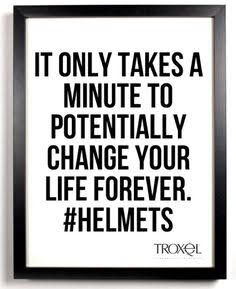Every Ride. Every Time.
International Helmet Awareness Day is Sept. 12-13
Horses are prey animals. We can’t help it if we suddenly spook or bolt or take off when we are frightened. Or if we get stung by a wasp. Or the horse in the paddock next to the arena gets scared and we are certain we should be too. We certainly don’t want to hurt our humans, but our reflexes are written into our DNA. We can’t help ourselves.
Which is why you should wear a helmet.
Every ride. Every time.
The humans I am around are good about wearing helmets. Some of them say they feel naked when they don’t have one on. We all laugh about that at night when the lights are off in the barn, but we’re glad they protect themselves.
Think about it. Football players wear helmets and no one questions that decision. The journal “Neurological Focus” reported that most traumatic brain injuries involve riding horses (a whopping 45.2%), compared to contact sports (20.2%).
Want some more statistics to convince you?
The most frequent cause of death and serious injury for mounted and dismounted horse activities is head injury.
Head injuries are associated with approximately 60% of all equestrian deaths and 18% of equestrian injuries.
Head injuries are cumulative. An original head injury can be made much worse by additional concussions.
Injury risk depends on the height of the fall as well as the speed at which you’re traveling. Even a fall from a standing horse can be catastrophic.
The majority of horse-related injuries occur while riding for pleasure.
Aside from death, brain injury survivors may suffer personality changes, intellectual and memory impairment, or epilepsy.
Despite all that, Brainline (a website about brain injuries) reports that only 20% of equestrians wear protective headgear every time they ride.
There is no statistical correlation between skill level and injury likelihood.
Courtney King-Dye’s experience proves that final statistic. The USDF Certified Dressage Instructor and USDF Gold Medalist represented the United States in the 2007 World Cup in Las Vegas, the 2008 World Cup in The Netherlands and the 2008 Beijing Olympics. On March 3, 2010, a horse she was riding tripped and fell. She was not wearing a helmet and suffered a traumatic brain injury. After four weeks in a coma, she spent three months in in-patient rehabilitation where she relearned how to walk and talk.
She still has seizures and frequent falls. She has trouble sleeping. Happily, she didn’t lose cognitive skills from her accident and she can teach. She’s also a para rider, but her dreams of an Olympic medal are shattered.
She was the catalyst for and is an avid supporter of Riders4Helmets. Riders4Helmets International Helmet Awareness Day will be held Sept. 12-13, and those two days are a PERFECT time to buy a new helmet as nearly every helmet manufacturer has helmets on sale.
Remember, if you have a hard knock to your noggin while wearing your helmet, immediately replace it as there may be damage you can’t see. Replacing your helmet every four to five years is also recommended. So, scope out your favorite helmet online and buy a cool new one in honor of the 2020 International Helmet Awareness Day. New bling, new colors, new features!
Visit https://www.riders4helmets.com/international-helmet-awareness-day-participating-retailers/ to locate a retailer. Please share this might just save a life.
#Riders4Helmets #InternationalHelmetAwarenessDay #EveryRideEverTime





